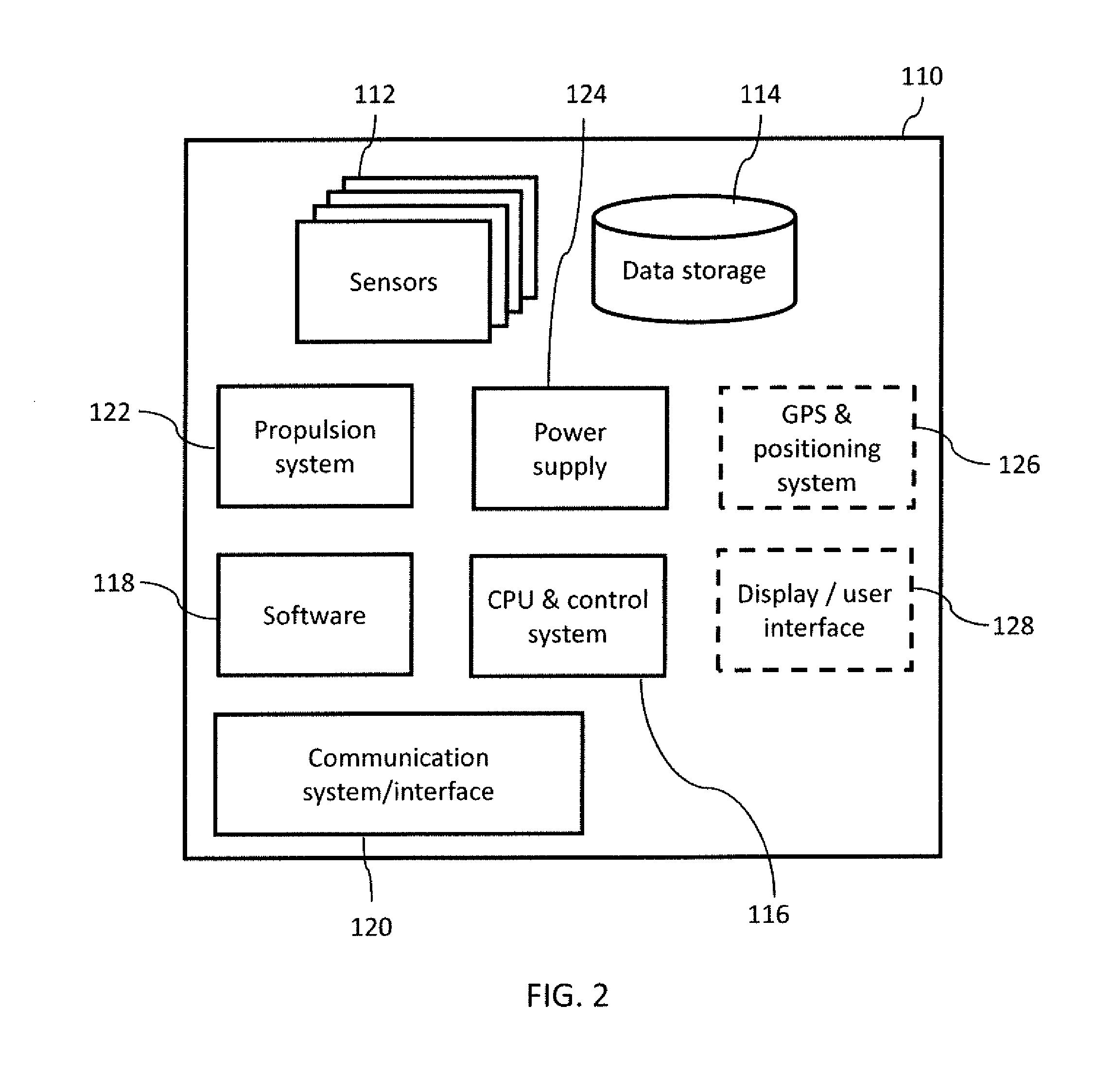Multi-sensor platform for crop health monitoring
a multi-sensor platform and crop technology, applied in the field of crop monitoring and assessment, can solve the problems of requiring expensive and extensive intervention, difficult for a grower to predict the quality and yield of the crop, and difficult for a grower to know i
- Summary
- Abstract
- Description
- Claims
- Application Information
AI Technical Summary
Benefits of technology
Problems solved by technology
Method used
Image
Examples
Embodiment Construction
)
[0054]The systems and methods described herein for monitoring and assessing crop health can provide rapid and sensitive screening of individual plant health with reduced human labor, and at a far greater speed than can be accomplished by human scouts. The systems and methods described herein can be deployed outdoors, such as in a field or orchard, or indoors such as in a greenhouse. The systems and methods have an automated component, but are flexible and can be repeatedly modified to enhance the crop-related information that they provide.
[0055]Some embodiments also capture and integrate knowledge from human experts into automated crop monitoring systems and methods. Their expertise can be effectively and efficiently captured and applied via an automated system that acts as a proxy, making the technology an extension of the grower.
[0056]Furthermore, embodiments of the systems and methods described herein can provide predictive models that can be used to predict future health of pla...
PUM
| Property | Measurement | Unit |
|---|---|---|
| power | aaaaa | aaaaa |
| temperature | aaaaa | aaaaa |
| speed | aaaaa | aaaaa |
Abstract
Description
Claims
Application Information
 Login to View More
Login to View More - R&D
- Intellectual Property
- Life Sciences
- Materials
- Tech Scout
- Unparalleled Data Quality
- Higher Quality Content
- 60% Fewer Hallucinations
Browse by: Latest US Patents, China's latest patents, Technical Efficacy Thesaurus, Application Domain, Technology Topic, Popular Technical Reports.
© 2025 PatSnap. All rights reserved.Legal|Privacy policy|Modern Slavery Act Transparency Statement|Sitemap|About US| Contact US: help@patsnap.com



